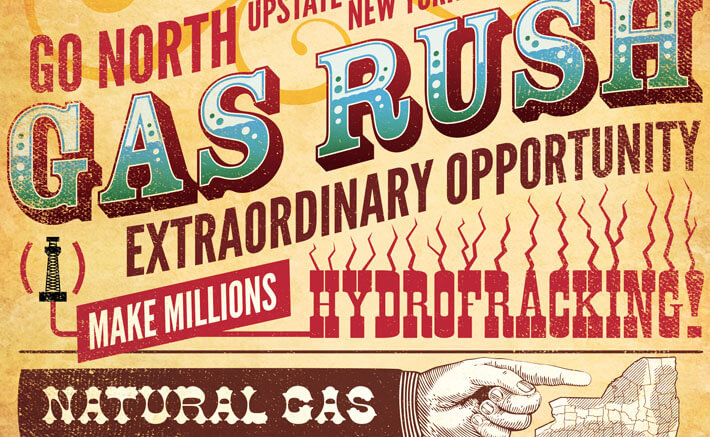The only geologist serving in the state Assembly, Steven Engelbright (D-East Setauket), is “grateful that we do not have” Marcellus Shale under Long Island, but he notes that both regions share an interest in encouraging farming and tourism, which hydrofracking would severely impact.
“The communities upstate are quite divided over the issue,” Englebright tells the Press. “It’s not a slam dunk.”
Characterizing the two sides of the policy debate, he adds, “It’s: ‘Do you want to encourage this industry to enter our state in a really aggressive way?’ or ‘Do you want to buy more time and proceed with caution and know what we’re really buying into?’”
State Attorney General Eric Schneiderman has shown that he’s on the “take it slow” side, too. In April the AG filed suit in Brooklyn federal court against the federal Environmental Protection Agency accusing the agency of abrogating its duty to conduct a more thorough study of hydrofacking before approving it in the Delaware River watershed. The EPA has a leading role in the Delaware River Basin Commission, which also consists of New York, New Jersey, Pennsylvania and Delaware.
“They didn’t conduct a study before they said, ‘OK, Let’s move forward with this rule-making process!’” says an insider in the AG’s office who asked their name not be used because they weren’t authorized to publicly speak on the matter, explaining the basis for the lawsuit. “We said, ‘No, hold up. Before you have a rule-making process, you should know what rules you should have in place!’”
Pennsylvania “has lax rules” governing fracking, another source in the AG’s office tells the Press (also not authorized to speak on the heated issue), so another goal in the suit is to raise the bar in the river basin so stricter standards are adopted.
The DEC contends its newly released recommendations, if adopted in final form, would protect the state’s environmentally sensitive areas while realizing the economic development and energy benefits of the state’s natural gas resources. They include prohibiting hydrofracking in the New York City and Syracuse watersheds, including a buffer zone, prohibiting drilling on state-owned land including parks, reforestation and wildlife management areas, “primary” aquifers and permitting drilling on privately held lands under rigorous and effective regulations codified into state law.
The NYC watershed, which covers 1,500 square miles in rural upstate New York, provides 1.2 billion gallons of drinking water to millions of NYC consumers each day, piped in via hundreds of miles of aqueducts and tunnels, reads the report. Hydrofracking in the watershed could produce an estimated $300 million in revenues for New York City and the smaller communities within the watershed, according to the DEC’s 2009 draft report, which would have permitted fracking in watersheds. It could also degrade one of America’s greatest environmental assets and leave 9 million people with toxic water if something were to go wrong.
This Animal Farm-esque double-standard doesn’t sit well with some lawmakers.
“Although I am pleased that the New York City and Syracuse watersheds will be exempt as they are unfiltered water sources, it does however raise a troubling paradox,” wrote state Sen. David Carlucci (D-Rockland/Orange) in a July 10 letter to DEC Commissioner Martens. “If the threat of potential pollution is too great to subject the New York City and Syracuse watersheds to, why would it then be acceptable to subject water sources in the rest of the state to the same potential contamination?”
According to the U.S. Geological Survey, nearly all of the fluid injected into wells during hydrofracking returns to the surface, including 15,000 gallons of chemical byproducts for every 3 million gallons of water. The waste material is then diluted and released into waterways or stored temporarily onsite in pits.
“The containment of fluids within a pit is the most critical element in the prevention of contamination of shallow ground water,” states the Frac Focus Chemical Disclosure Registry, a joint project of the Ground Water Protection Council and the Interstate Oil and Gas Compact Commission. “The failure of a tank, pit liner, or the line carrying fluid (‘flowline’) can result in a release of contaminated materials directly into surface water and shallow ground water. Environmental cleanup of these accidentally released materials can be a costly and time-consuming process. Therefore, prevention of releases is vitally important.”
But what exactly is in this fracking water? The identities of those special chemicals are little more than a mystery. Just like McDonald’s “Special Sauce,” the recipe is proprietary—it’s a business secret.




































